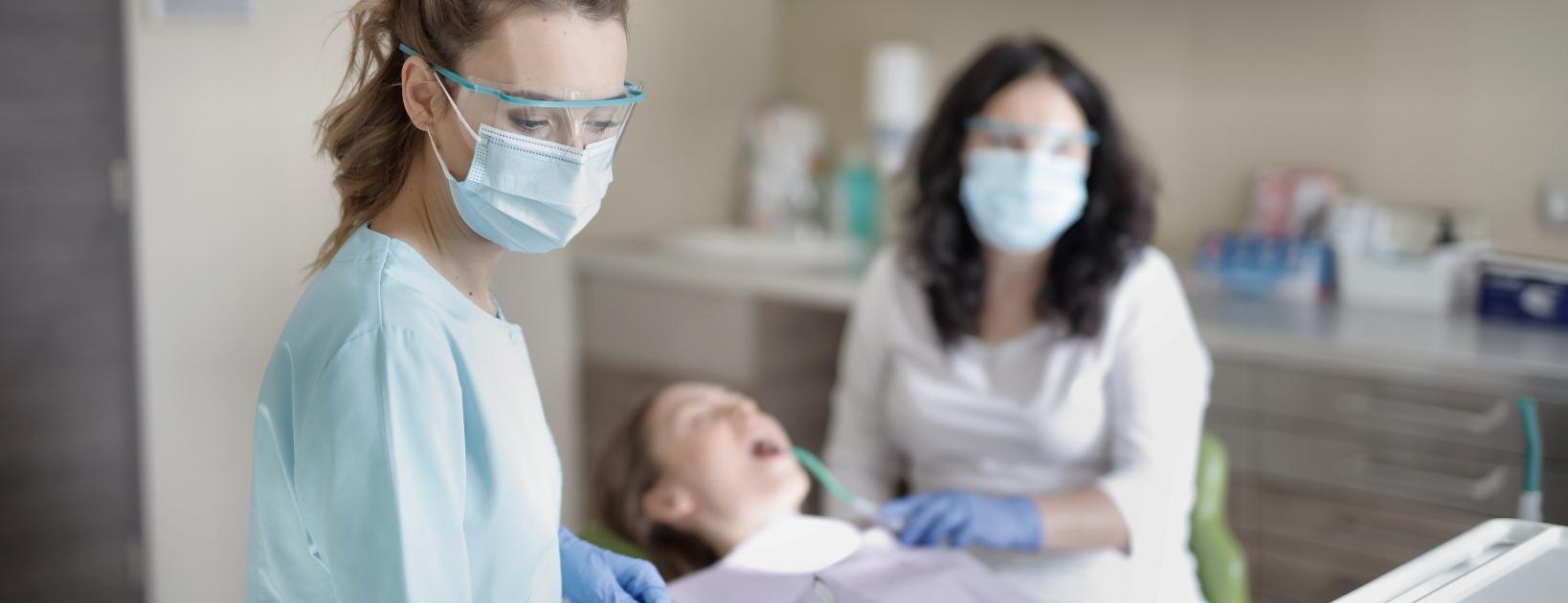Blog Center
Explore the latest stories and insights!

OSHA Compliance Tips for your Dental Practice
Date: 2022/02/10
Training | 5.8 MIN READ
Today, you’re going to be learning some quick tips to reach OSHA compliance in your dental practice. This is not a definitive, all-inclusive list, but it will get you on the right path.
Here are some of the inspection topics you’ll learn about:
- OSHA Written Programs
- Employee training
- Exits and escape routes
- Fire extinguishers
- Eyewash stations
- Electrical panels
- Personal protective equipment (PPE)
- Hepatitis B vaccine
- Safety Data Sheets (SDS)
1. Have up-to-date OSHA Written Programs
In order to reach OSHA compliance in your dental practice, you need 4 OSHA Written Programs:
- Exposure Control Plan
- Hazard Communication Plan
- Emergency Action Plan
- Respiratory Protection Program (due to COVID-19)
2. Provide employee training.
Here’s a guideline of what employee training to provide initially and annually:
- Essential Elements of the Globally Harmonized System
- Bloodborne Pathogens and Sharps Safety
- Radiography
- Back Safety
- Nitrous Oxide Safety (required if your practice is using the gas)
- Dental Office Safety
- Sexual Harassment Prevention
There are also other training requirements linked to OSHA Written Programs. For example, train employees on the Emergency Action Plan. As for the Respiratory Protection Program, employees need to be trained in respirators.
Document OSHA training records, and keep them on-file for 3 years. Smart Training’s learning management system (LMS) automatically creates certifications and documents employee training for you.
3. Make sure exits are marked with signs.
The signs must clearly say “exit,” and they must light up.
Ensure exit paths are cleared of obstruction. All exits should be unlocked, so that no employee needs a key to escape. Make sure there are no doors that could be mistaken for an exit. If there are, clearly mark those doors. You can read more about OSHA requirements for exit signs.
Employees need to know how to escape the building, and where to meet in the case of emergency. This is an aspect of the Emergency Action Plan. Review emergency escape procedures and route assignments. OSHA compliance requires your dental practice to have floor plans, workplace maps, and safe areas.
4. Ensure fire extinguisher is in working order.
Assign one of your employees to inspect the fire extinguisher monthly. Keep a log of these inspections. Your employee should make sure the fire extinguisher is in its designated place. The fire extinguisher needs to be visible, full (you can weigh it), easily accessible, and in the operable range. If the fire extinguisher is wheeled, inspect the condition of tires, wheels, carriage, hose, and nozzle. For non-rechargeable extinguishers, operate the push-to-test pressure indicators.
All your employees need to know where the fire extinguisher is located and how to use them. The fire extinguishers need to be charged, and make sure the inspection tag is on them. Instead of hiring a company to inspect your fire extinguisher, you can buy a new one yearly. A photocopy of the receipt is a replacement for the inspection tag.
Your fire extinguisher needs to be located at eye-level. Consider: does the location of the fire extinguisher need signs?
Speaking of fire extinguishers: conduct yearly fire drills.
5. Ensure there is an eyewash station.
Assign an employee to check the eyewash station once a week. The “check” consists of turning the eyewash station on, making sure the water is still running, and then initialing on the eyewash station log. The water should be cold to avoid the risk of thermal injury, and a sign should designate the location of the eyewash station.
6. Remove storage in front of your electrical panels.
Electrical panels need to have a 24 inch clearance all around. Nothing can be stored directly in front of them, because it blocks access. Circuit breakers need to be marked, and employees should know where the circuit breakers are.
Otherwise, make sure machines, equipment, and electrical cords are in good condition. Grounded outlets and cords need to be bypassed or modified. Circuit breakers need to be properly marked.
7. Provide personal protective equipment (PPE) free of charge.
Also, provide the correct PPE needed (dental PPE has changed due to COVID-19). PPE needs to be appropriately sized for employees. Also, consider any allergies your employees have. For example, if one of your employees is allergic to latex, provide a non-latex glove option. Ensure employees are aware of the location of the PPE. Also, make sure your laundry policy is in compliance with OSHA.
8. Offer the Hepatitis B vaccine.
Dental employees are at risk for contracting Hepatitis B, due to working with sharps. Offer all employees the vaccine, and document employee vaccinations. If an employee refuses the Hepatitis B vaccine, make sure to get their declination in writing.
9. Maintain your Safety Data Sheets (SDS) correctly.
All hazardous chemicals, including injectable pharmaceuticals, need to be included on your Safety Data Sheet (SDS). Your SDS needs to be filed correctly, and employees need to know how to read the SDS and where to access it. Include cleaning disinfectants in your SDS.
All hazardous chemicals need to be labeled correctly. A bottle with no label is an OSHA violation. Chemicals need to be stored properly and inspected for leaks.
Need help with OSHA compliance?
Oftentimes, it’s best to consult with an expert. OSHA compliance in your dental practice can seem like a full time job, and for our Compliance Advisers, it is.
All our compliance solution packages – Platinum+ and Essentials – offer online OSHA training, OSHA Written Programs, compliance checklists, Job Hazard Analyses, and monthly safety and security meetings. With Platinum+, you’ll also get your own Compliance Adviser and a yearly compliance inspection.
Interested in learning more? Schedule a demonstration with one of our Compliance Advisers.
Subscribe to Our Blog
You may also like